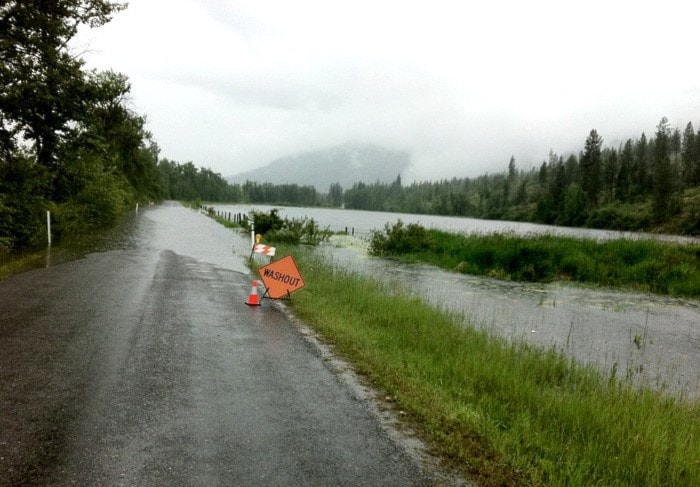Regional District of Central Kootenay chair John Kettle said that unprecedented international efforts in the Columbia River drainage helped avert potential disaster.
“In the 12 years I have been involved with the Columbia River Treaty (an agreement to manage the resource) I have never seen the co-ordination and co-operation from both sides of the border concerning reaction to flows and information as took place during the last three weeks,” Kettle said.
The Creston Valley connection to the Columbia River is the Kootenay River, whose headwaters are in the Rocky Mountains of British Columbia. The Kootenay (Kootenai in the U.S.) flows south into Montana and Idaho, then returns north to re-enter Canada near the Rykerts border crossing. It empties into the Columbia River at Castlegar. Along its way, the Kootenay fills the Koocanusa reservoir and Kootenay Lake in Canada and Libby Dam in the U.S.
Kettle said that careful management of water flow, especially at Libby Dam, was needed to protect property.
“In my opinion, we narrowly avoided a disastrous flood,” he said. “To my knowledge, never in the history of the Columbia River Treaty, have groups including the Army Corps of Engineers, BC Hydro and Fortis met daily on telephone conferences with all affected participants having input.
“As a result of this incredible cooperation, Canadian parties requested, and were granted (by the Army Corps of Engineers) action that saw both Libby and Koocanusa go ‘full pool’ plus two feet.”
Kettle said that this was the first time that the huge and vital Libby Dam had been pushed to hold water at a level two feet higher than what is considered its maximum.
“If we had not agreed on this unprecedented tactic, I honestly believe we would have had millions of dollars of damage in addition to what we suffered through the Regional District of Central Kootenay.”
Kettle said the co-operation extended even further when an old mine tailing pond near Salmo threatened to breach in the last few weeks. A huge pumping effort was undertaken to empty the pond before its walls collapsed and allowed the water to enter the Kootenay River, whose waters eventually supply Spokane with drinking water.
“I called (Kootenay East MLA) Bill Bennett when I learned that a problem had been identified,” he said. “Bill Bennett got everybody out of bed — cabinet ministers and Premier Christy Clark included — and told them that we had a big problem here.
“We had people on-site within an hour.”
Dozens of RDCK staff and contractors, and Cominco engineers, too, worked round the clock for a week until the situation stabilized.
The tailing pond base, Kettle said, holds 15 feet of contaminants that began amassing more than a century ago from the nearby mining operation.
“It contains chromates and alkalis and arsenic — we don’t even know what all was put in there over the years,” he said.
As chair of the RDCK, Kettle declared at least 10 emergency orders throughout the regional district to deal with the effects of high waters and floods in the last month.
